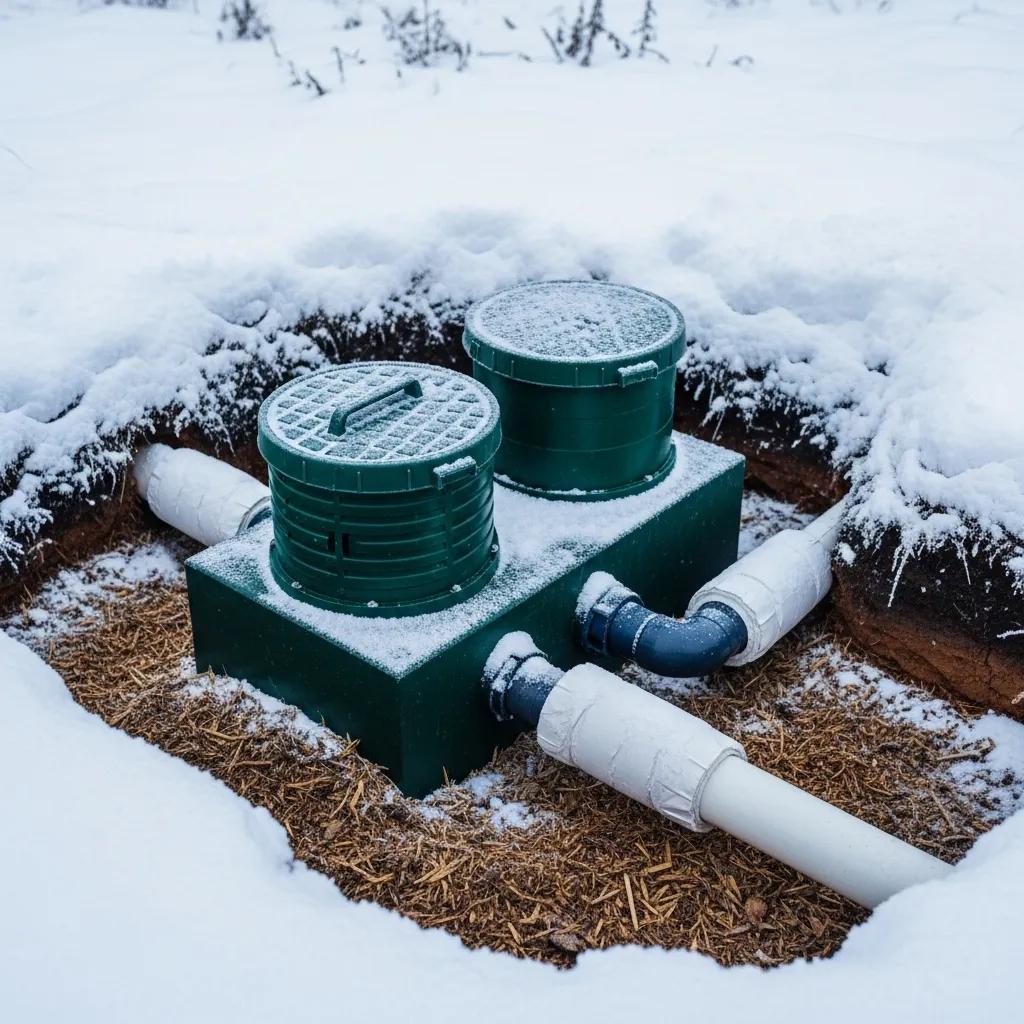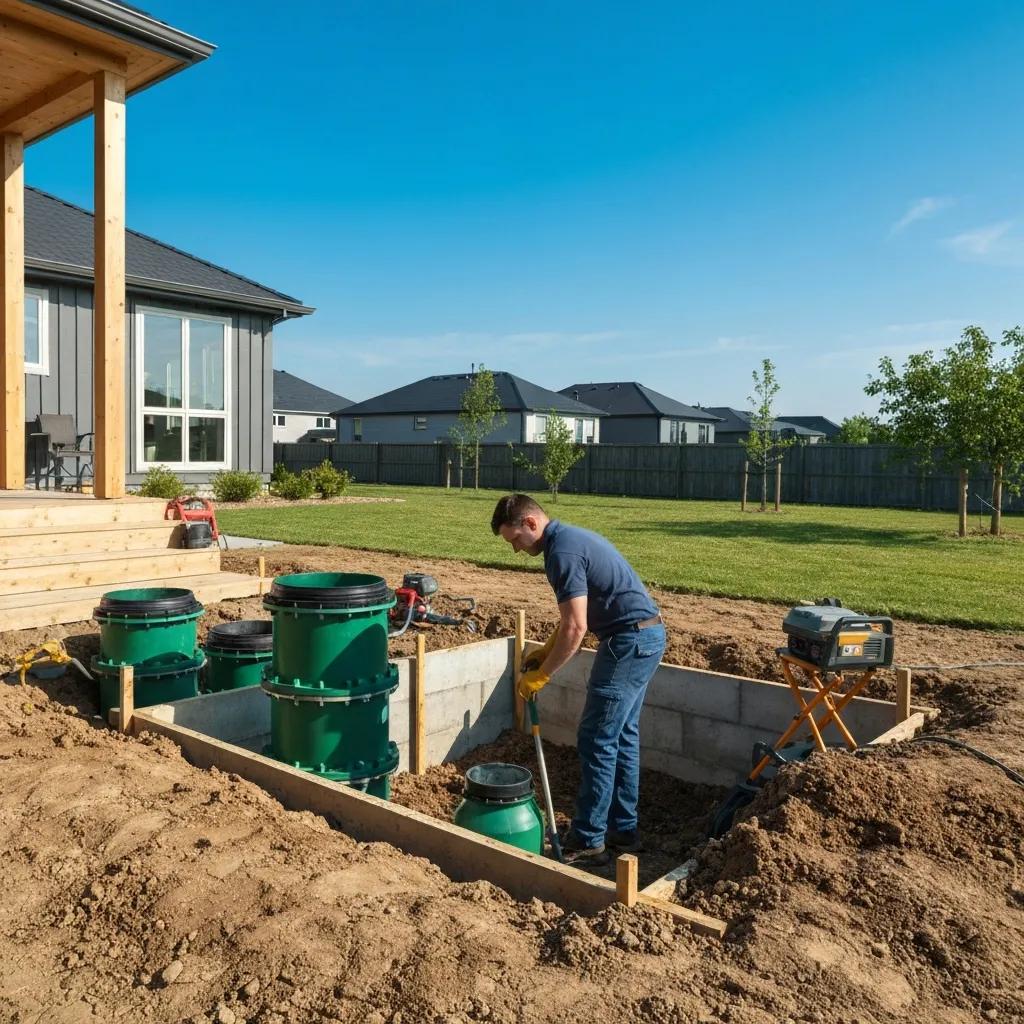Are you constantly asking yourself, “What size septic tank do I need?” Selecting the correct tank size isn’t as simple as it might seem. This guide walks you through essential considerations like how household occupancy and soil conditions influence your cesspit size.
Readers will discover how to avoid costly errors that stem from undersized or oversized tanks and learn maintenance tips tailored to their system’s capacity. With insight from a seasoned expert, you’ll become adept at assessing your concrete tank needs, ensuring your septic system functions efficiently for years to come.
Key Takeaways for Septic Tank Sizes
Understand the Importance of Selecting the Right Septic Tank Size
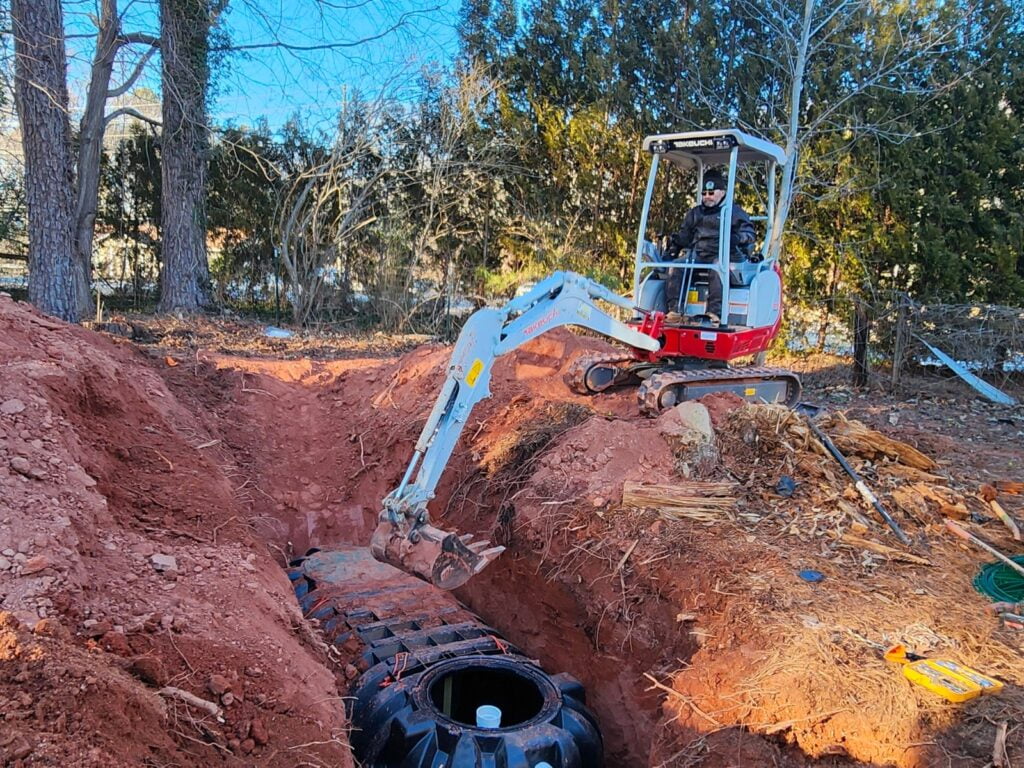
Choosing the proper septic tank size is more than just a numbers game; it’s crucial for optimal waste management and system efficiency. A tank that’s too small can lead to frequent maintenance issues, whereas one that’s overly large may unnecessarily inflate installation costs. With a focus on gallon capacity, readers will soon understand how the right tank size ensures smooth waste processing and can even contribute to eco-friendly practices like irrigation and rainwater harvesting.
Up next, the insights will delve into how septic tank capacity plays a critical role in system performance and what homeowners might face with an improperly sized tank.
Know How Septic Tank Size Affects System Performance
When it comes to septic system performance, the size of the tank directly impacts how efficiently it processes household waste. A tank that’s too small for a home’s needs might not have enough time to separate solids from liquids, resulting in more frequent pump-outs and potential backups during heavy usage — think multiple showers running simultaneously or laundry day.
On the flip side, tanks that are too large can lead to higher construction costs and might not adequately break down the waste due to infrequent fill-up. That’s why accounting for factors like the number of residents, soil type, and geology is key when sizing a septic tank, ensuring the greywater is effectively treated and safeguarding against system failures.
Learn About Potential Problems With Incorrect Tank Sizes
One often underestimated issue with choosing the incorrect septic tank size is the chain reaction of problems it can create within a home. For instance, a tank that’s too small for the household may struggle to cope with the wastewater volume from bathrooms and laundry cycles, leading to inconvenient and costly overflows.
Conversely, homeowners in the United Kingdom using oversized plastic septic tanks might discover that reduced wastewater flow fails to stimulate the necessary bacterial breakdown, impairing the system’s function and wasting the natural filtration benefits of the surrounding soil.
Getting it right matters. The number of people in your home directly shapes your septic tank needs.
Determine Septic Tank Size Based on Household Occupancy

Understanding the daily wastewater volume is key for homeowners when selecting a suitable septic tank size. That’s where calculating the liquid flow becomes essential; factors like the number of bedrooms and overall plumbing usage offer clues for the ideal tank capacity.
Additionally, considering potential future growth—might there be more people or maybe a new bathroom later on?—ensures long-term efficiency. Utilizing durable materials such as fiberglass can also enhance system longevity. This section leads into practical steps to accurately measure daily flow and the significance of planning for tomorrow’s needs.
Calculate Daily Wastewater Flow for Proper Sizing
To get septic tank sizing spot on, one must first calculate the daily wastewater flow with precision. This calculation hinges on how many gallons zip down the drains and swirl through the toilets of a property each day. For a reliable estimate, homeowners can consult with industry experts from organizations like Angi, who understand the nuances of both household water usage and regional sanitation guidelines.
A mindful assessment of the volume lets property owners choose a tank that handles daily demand, prevents overflows, and maintains a robust drain field. Identifying the right tank size is a balancing act, ensuring both environmental safety and system efficiency for years to come.
Consider Future Growth When Choosing Tank Capacity
As families grow and homes evolve, the capacity of the septic tank should also reflect these changes. An inspection today might show that a steel or polyethylene tank is fitting for current needs, but what about when a new bathroom is added, or the washing machine runs more frequently? Factoring in the eventual increase in wastewater from toilets, showers, and kitchen use is vital. Planning for the “what ifs” of household expansion ensures the system can handle the increased load of solids and liquids without stress or costly upgrades in the future.
For those pondering the leap from a cozy family of three to a bustling party of five or planning to turn half the garage into a new laundry room, here are the steps to make an informed decision:
- Consult with a septic tank expert to gauge the average wastewater output as it stands today.
- Discuss and predict any potential household changes that might affect water usage.
- Choose a septic tank material that suits both current and future needs, with an eye on durability and longevity.
Once the right septic tank size is matched to your home’s occupancy, it’s time to dig deeper. The ground beneath us holds secrets critical to choosing your septic ally, so let’s turn the earth.
Evaluate Soil Conditions That Influence Septic Tank Sizing

Understanding the unique characteristics of one’s soil is a fundamental step in determining the most efficient septic tank size. The subsection will navigate homeowners through the importance of testing soil percolation rates to inform tank choice and adjusting tank size according to soil absorption ability.
These elements are crucial in ensuring that the plumbing system, specifically the drainage and septic drain field, function optimally. Adequate sizing prevents frequent septic tank pumping and ensures that effluent is properly managed. The ensuing details provide practical insights into these considerations, guiding homeowners toward informed decisions for a robust septic system.
Test Soil Percolation Rates to Inform Tank Choice
Soil percolation tests, essential for evaluating the potential wastewater absorption, are a critical component when deciding on septic tank size. The rate at which water percolates, or filters through your soil, determines the system’s design in the United States. If the soil drains too quickly, contaminants from sump pump discharge may not be adequately filtered, and if it’s too slow, water could build up, causing problems.
This assessment, often overlooked in the excitement of new home ownership, informs whether additional systems, like a larger tank or a secondary sump, may be necessary to manage efficiently the wastewater without risking your ground water quality or necessitating frequent pumping.
Adjust Tank Size According to Soil Absorption Ability
Assessing the soil‘s ability to absorb water through a percolation test is central to sizing a septic tank correctly. For effective sewage treatment, the size of the tank must be balanced with the ground’s capacity to support bacteria growth and process wastewater treatment. This balance ensures that plants and natural soil processes have enough time to absorb and purify the wastewater, making the system not only more sustainable but also more efficient and less prone to breakdowns.
Soil has had its say; now, consider the water. How much you use shapes the tank you’ll need.
Assess How Water Usage Influences Septic Tank Requirements
Homeowners must consider how household water usage impacts their septic system. High-water appliances like washers and dishwashers play a significant role in determining septic tank load, while water-saving fixtures may reduce the need for larger tanks. Knowing the balance between sewage generation and efficient waste processing is essential. The percolation characteristics of both clay-rich and sandy soils will influence this balance.
Up next, practical advice on considering appliance impacts and incorporating water-conserving fixtures to optimize septic tank sizing.

Factor in High Water Appliances Impacting Tank Load
High-water appliances significantly influence a septic system’s efficacy, which makes consideration of their impact a must when determining the right septic tank size. Smart Septic Pros recognizes that units like garbage disposals, power showers, and energy-efficient washing machines can skew the water usage patterns of a home.
By accounting for the increased wastewater load these appliances produce, homeowners can ensure that their system maintains optimal health and accessibility. Contact Smart Septic Pros for personalized Septic Tank Inspections that account not only for current usage but anticipated changes, providing a tailored solution that fosters peace of mind.
Incorporate Water-Saving Fixtures to Reduce Tank Size
Integrating water-saving fixtures is a savvy move for homeowners looking to optimize Septic Tank Upkeep and minimize the dimension of their system’s needs. These fixtures significantly reduce water consumption, which in turn, lightens the load on the septic system, potentially allowing for a smaller tank size.
Not only does this approach promote Septic Tank Maintenance, but it also supports groundwater conservation, aligning with eco-friendly practices. Opting for faucets, showerheads, and toilets designed for lower water use translates to less strain on the tank, fewer pump-outs, and a longer lifespan for the entire septic system.
The use of water-efficient fixtures can be a game-changer in managing the delicate balance of your septic system and safeguarding the environment:
| Fixture Type | Traditional Consumption | Water-Efficient Consumption |
|---|---|---|
| Toilets | Up to 6 gallons per flush | Less than 1.28 gallons per flush |
| Showerheads | 2.5 gallons per minute | 2 gallons per minute or less |
| Faucets | Over 2.2 gallons per minute | 1.5 gallons per minute or less |
Knowing how much water your household consumes sets the stage. Choose wisely and avoid the pitfalls of sizing your septic tank.
Avoid Common Mistakes in Septic Tank Size Selection
As homeowners navigate the complexities of septic tank selection, they often overlook crucial aspects like the amount of wastewater their household generates. It’s not just about the sand in the drain field or keeping an eye on the water table to prevent backflow; it’s about accurately estimating the full extent of water supply usage.
Professional guidance can mean the difference between a well-sized tank and one that contributes to septic woes. The following sections offer valuable insights into avoiding underestimation of wastewater production and seeking expert advice for precise tank sizing.
Refrain From Underestimating Household Wastewater Production
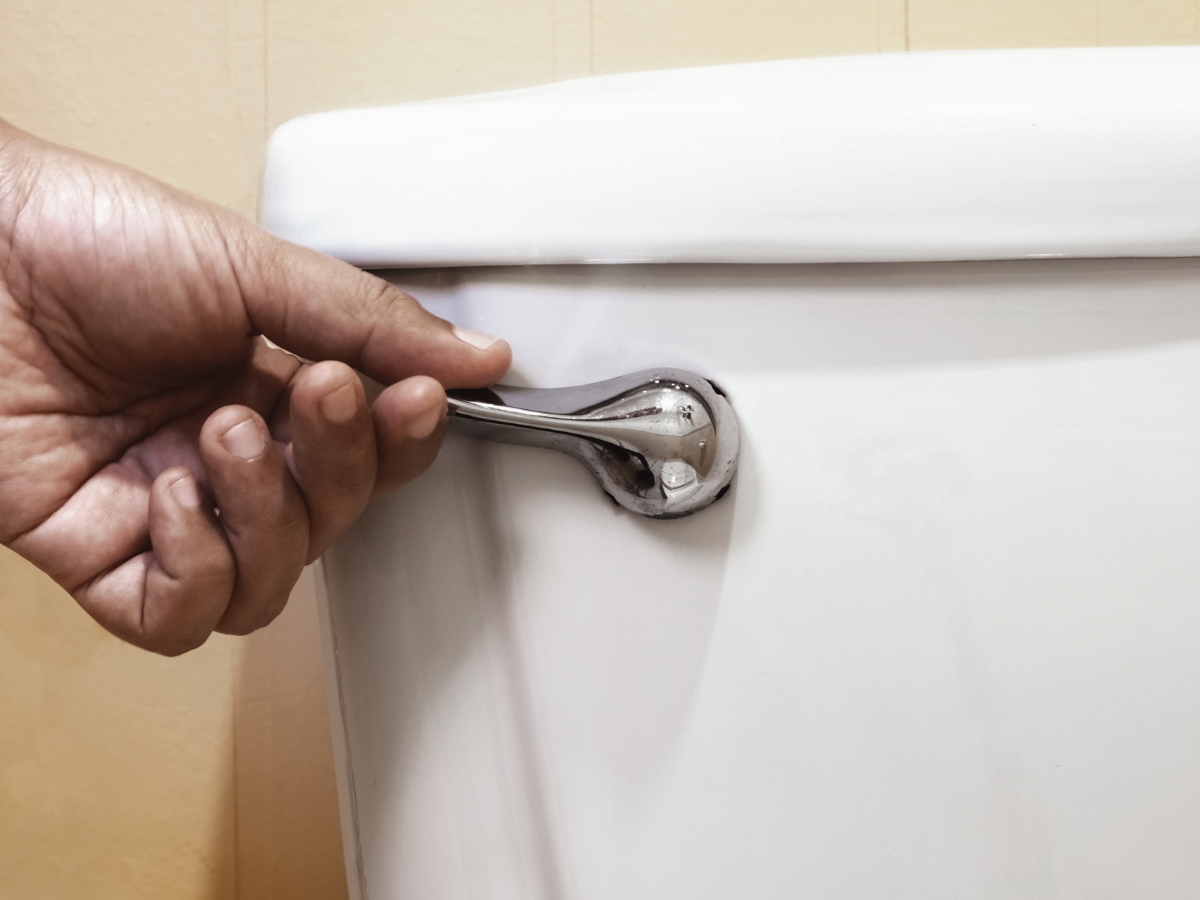
Homeowners should never underestimate the volume of wastewater they produce, as this can lead to selecting a septic tank that falls short in managing pollutants effectively. Each faucet, dishwasher cycle, and flushed toilet adds to the daily tally, and it’s not just about the number of gallons—every cubic foot of wastewater contains substances that need adequate time and space to be processed.
Preferring precast concrete tanks for their durability and ease of installation could solve the issue, yet it’s the precise size that ensures your home steers clear of backups and environmental hazards.
| Household Feature | Approximate Water Use | Impact on Septic System |
|---|---|---|
| Dishwasher | 6 gallons per cycle | Increases pollutant concentration |
| Bathroom Faucet | 2 gallons per minute | Contributes to water volume |
| Efficient Toilet | 1.28 gallons per flush | Reduces wastewater flow |
Seek Professional Advice for Accurate Tank Sizing
Seeking professional advice is a smart move when sizing a septic tank for your home. Experts take into account not just the leach field size for a 3-bedroom home or the dimensions necessary for a large septic system; they also consider factors like local environmental regulations and household water usage patterns.
With their knowledge, homeowners can avoid pitfalls such as undersized tanks leading to costly repairs or oversized tanks that waste resources. An accurately sized tank safeguards the function of the leach field, adheres to safety tank size standards, and supports the longevity of the entire system:
- An assessment by a septic tank expert can prevent the need for premature leach field repairs.
- Tailoring the system to the specific demand ensures a balance between leach field dimensions and daily water usage.
- Professionals recommend the best size to maintain system health, preventing overloading and promoting environmental safety.
Choosing the correct septic tank size is only the first step. Now, let’s focus on keeping it running efficiently with proper maintenance tailored to its dimensions.
Implement Maintenance Practices Based on Septic Tank Size
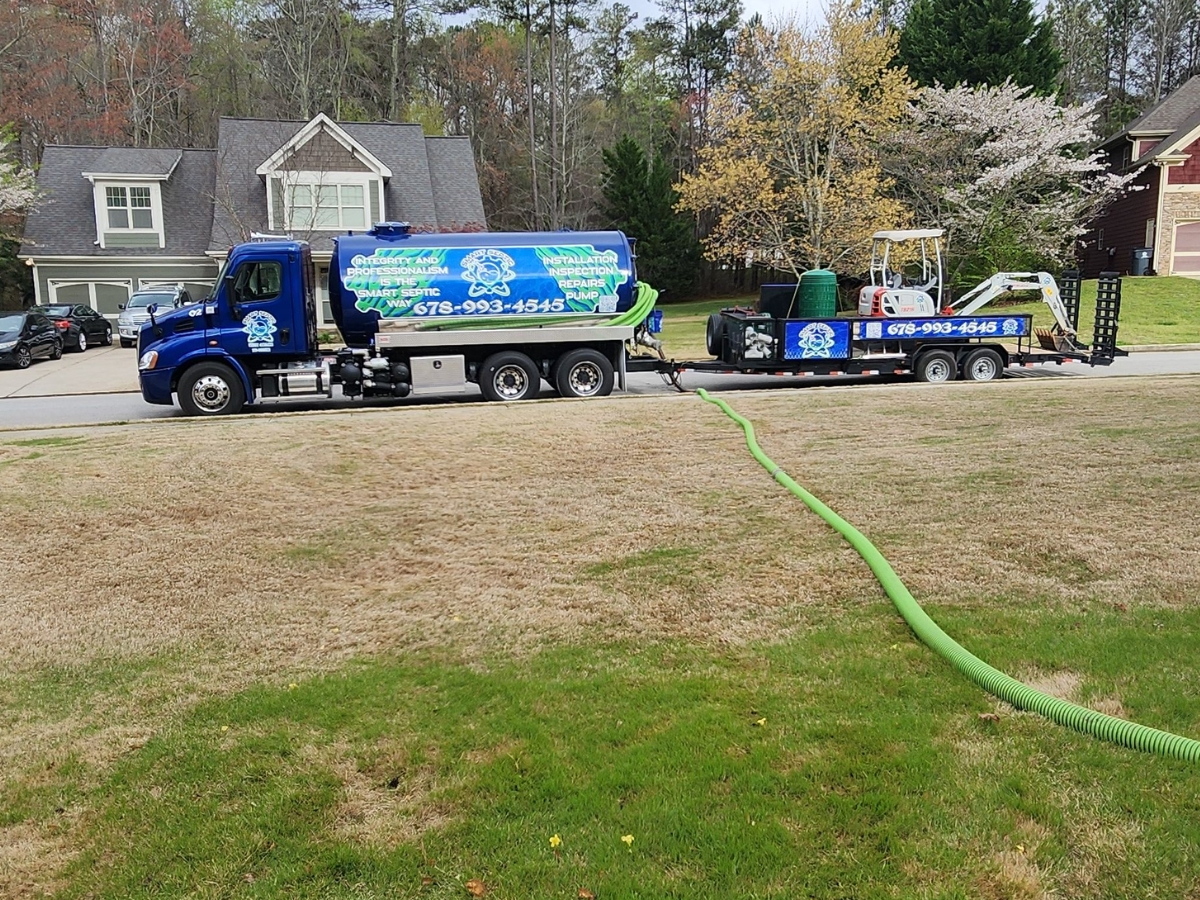
With the right septic tank size in place, homeowners should turn their attention to maintenance practices that complement their system’s dimensions. By scheduling pumping intervals that are appropriate for the septic drain field size, households can maintain optimal functioning. Monitoring the system’s health is also crucial for preventing any issues that could arise from incorrect sizing.
Upcoming discussions will guide homeowners through managing pump schedules and keeping an eye on indicators of a healthy system, both integral to safeguarding their septic field dimensions.
Schedule Pumping Intervals Appropriate for Your Tank Size
Regular maintenance is the key to a well-functioning septic system. The homeowner should mark their calendar for pumping intervals that suit the smallest septic system as much as the larger ones. Factors such as the amount of wastewater processed and drain field size influence these intervals; for instance, a tank serving a household of two may need servicing less frequently than one in a bustling family home.
By adhering to a professional’s recommended schedule, property owners ensure their system works efficiently, safeguarding against premature drain field problems and extending the lifespan of their septic setup.
Here is a simple guide to understanding how drain field sizes correlate with suggested pumping frequencies:
| Drain Field Size (ft²) | Household Size | Recommended Pumping Interval |
|---|---|---|
| Under 500 | 1-2 people | 3-4 years |
| 500-750 | 3-4 people | 2-3 years |
| 750+ | 5+ people | 1-2 years |
Monitor System Health to Prevent Size-Related Issues
Keeping a keen eye on the workings of one’s septic system is vital to nip size-related issues in the bud. Regular inspections can catch early warning signs, like slow drainage or unpleasant odors, that suggest your tank size may be mismatched with usage patterns. These proactive steps help homeowners prevent unsanitary overflows or inefficient processing that could compromise their home’s safety and comfort.
The key to successful maintenance and longevity of a septic system lies in establishing a routine check-up schedule. Here’s what a comprehensive monitoring plan might include:
- Visual inspections of the tank and drain field for signs of surfacing sewage or unusually lush vegetation.
- Usage tracking to observe trends in water consumption that may affect the septic system’s capacity.
- Professional evaluations to assess sludge and scum levels, ensuring they’re within healthy ranges for the tank‘s size.
Conclusion: Septic Tank Size Matters
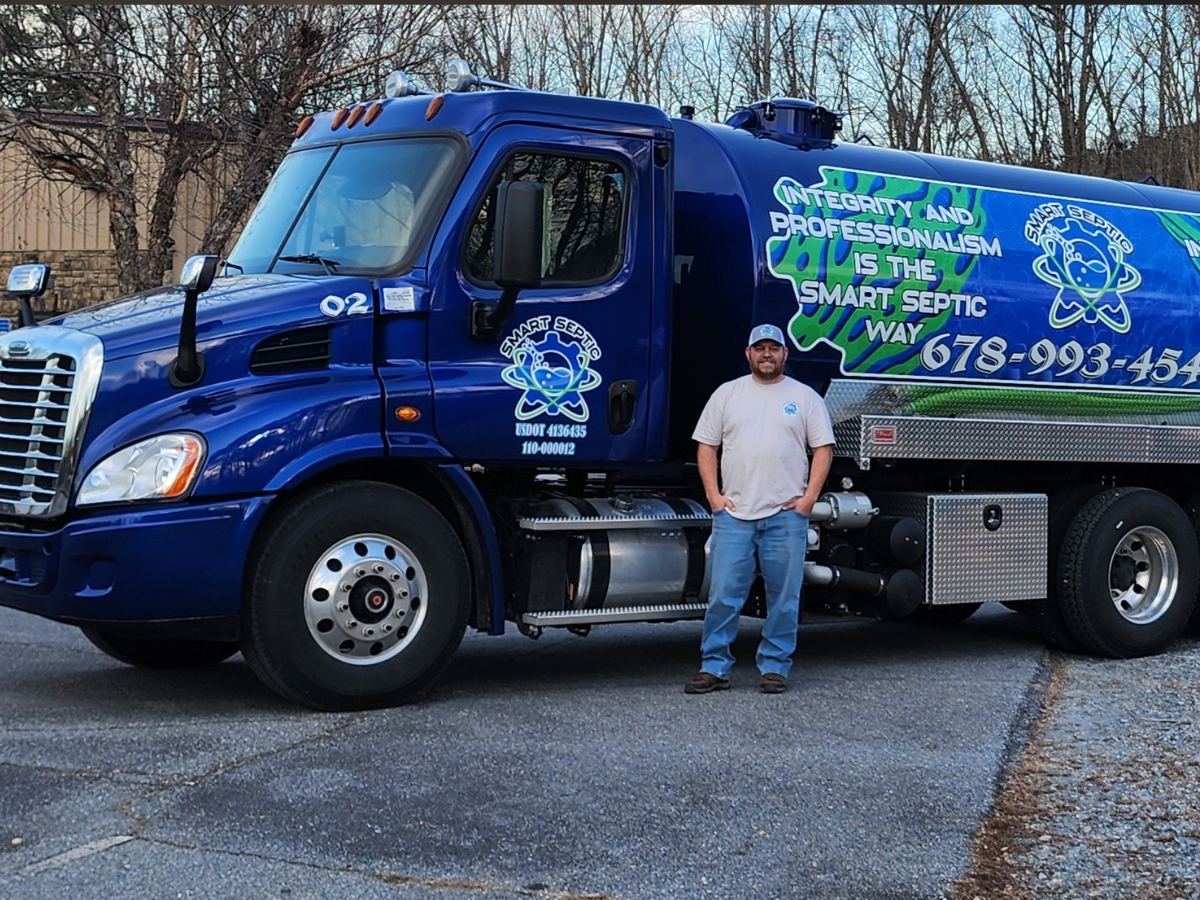
Selecting the right septic tank size is essential for efficient waste management and system longevity, taking household size and water usage into account. Proper sizing prevents the inconvenience of frequent maintenance and ensures the tank‘s performance matches the absorption capabilities of the soil.
Homeowners can avoid costly errors and environmental impact by consulting with professionals who consider local regulations and usage patterns to recommend the ideal septic tank size. Regular maintenance based on the specific tank size ensures the septic system stays healthy, maintaining its capacity to manage wastewater effectively over time.
If you’re looking for septic tank services in Kennesaw, Acworth, Marietta, or the metro Atlanta area, choose Smart Septic Pros. You can trust us to get the job done right at the most affordable prices.


